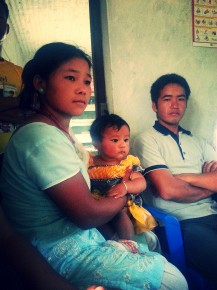Meena Lama, a bright 34 year old lady from Taplejung, Eastern Nepal, is an entrepreneur. Three months ago, Meena qualified for a loan of $250 from a local financial institution, founded and managed by women, to start a poultry farm in her backyard. She now offers home delivery of eggs and meat to the government staff quarters. Yet, when I met her, she seemed worried. ‘I wish the cooperative that gave me a loan would believe in investing in my husband’s business too. If he doesn’t get a loan soon; the only way to earn extra money would be to avail loans from moneylenders at an enormous rate and migrate to Middle East for work’. Her husband, Dipendra, wants a loan to start a wholesale goods’ store in the village.

Forty years ago, a microfinance company in Bangladesh gave loans to 42 women for the first time. Since then, 200 million of the previously ‘unbankable’ poor population has received loans. While microfinance has been correctly advocated as a major tool for tackling poverty, it seems to be leaving the poor men behind resulting unconsciously in a social imbalance. For instance, 80% of all microfinance loans go to women. Yet, in Pakistan, women still require 2 male guarantors to get a loan. In addition, a majority of these loans are used by their husbands and brothers even though the women bear the debt burden.
In countries where women are still overlooked, ‘positive discrimination’ that empowers women by giving them access to finance and their own livelihood may be a very good thing. There are countries where women still face discrimination and restrictions that limit their prospective growth. In those countries, microfinance fulfils their financial needs, provides literacy and builds capacity, enabling them to start small-scale economic activities that will eventually alleviate them out of poverty and have a say in their household decisions.
The other side of the argument is this – in the non-profit world, it is assumed that it isn’t necessary for men to have an equal access to microfinance as women because they tend to spend the money on unproductive activities. In addition, men are supposedly more employable than women because they’re physically stronger, and tend to control their families’ decisions and finances by virtue of being born a man in the household.
This is not always true. In Bangladesh, it’s the poorest boys who are less likely to get an education than poor girls. Yet, studies have shown that fathers with stable incomes have healthier, more educated children and more likely to end renounce outdated practices like child marriages. These children are more likely to further invest in their children’s education and health. Men with stable incomes are also less likely to migrate in search of work, and more likely to help with domestic chores which in turn models gender equality in practice for their children.

DFID Nepal’s ‘Improving Access to Finance for the Poor’ Programme is strongly targeted at the poorest regions of Nepal where access to finance is most limited, equally, for both men and women. A component of the programme is enabling financial institutions to extend financial services to remote districts by sharing risks to target specific regions and communities. These have so far been neglected by the traditional banks due to elements of high risks associated with the geography, gender imbalance, etc. The programme is focusing on innovative practices such as mobile banking to reach marginalised groups – both men and women, thus demonstrating a high impact on poverty and gender at a minimum cost. DFID Nepal’s ‘Improving Access to Finance for the Poor’ programme seeks to leverage $54 Million in private sector investment, provide new loans and equity to 8,000 small enterprises and create 88,000 jobs (50% of them to women) by 2017.
This is probably what every (wo)man wants. This is also (probably) how change happens.

1 comment
Comment by Pranita posted on
The article is very well written. I like and agree with the argument made here - although I must admit I was initially put off.
Agreed. Men must not be overlooked. Poverty takes no side when it comes to gender.